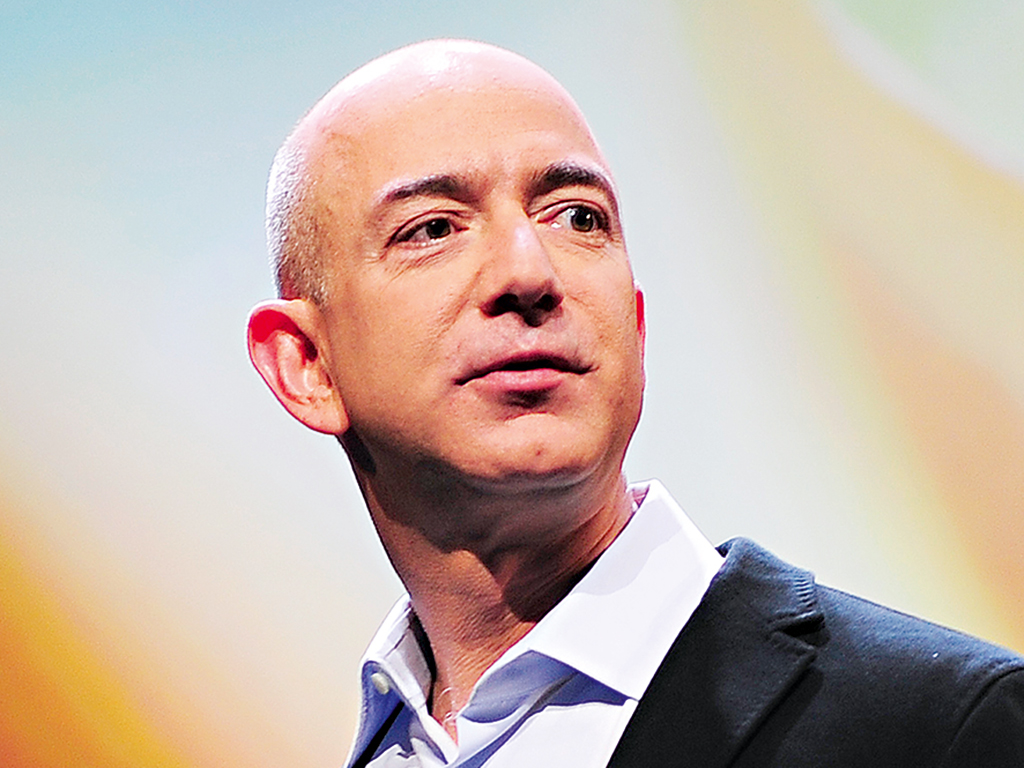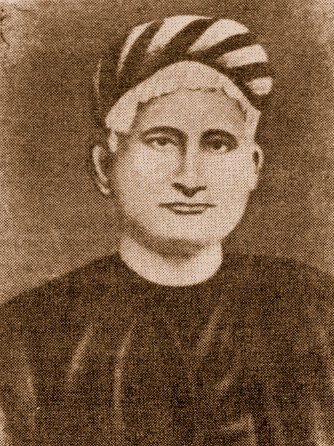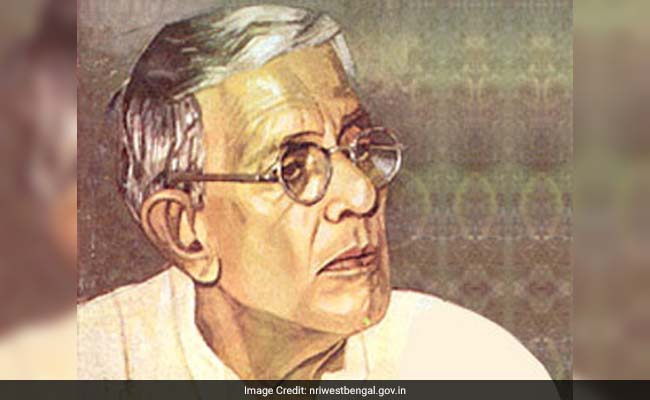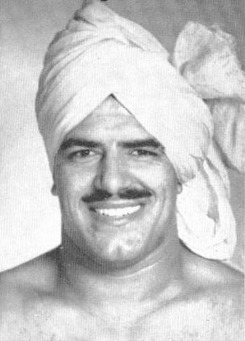Jeff Bezos
Jeff Bezos (born Jeffrey Preston Jorgensen; January 12, 1964) is an American engineer, technology and retail entrepreneur, investor and philanthropist who is best known as the founder, chairman, and chief executive officer of Amazon.com, which is the world's largest online shopping retailer. The company began as an Internet merchant of books and expanded to a wide variety of products and services, most recently video streaming and audio streaming. Amazon.com is currently the world's largest Internet sales company on the World Wide Web, as well as being the world's largest provider of cloud infrastructure services, through its Amazon Web Services arm.
Bezos’s other diversified business interests include aerospace and newspapers. He is the founder and manufacturer of Blue Origin (founded in 2000) with test flights to space beginning in 2015, and plans for commercial suborbital human spaceflight beginning in 2018. In 2013, Bezos purchased The Washington Post newspaper. A number of other business investments are managed through Bezos Expeditions.
With an estimated net worth of US$79.3 billion as of April 2017, Bezos is currently the third-richest person in the world, just behind Bill Gates and Amancio Ortega in first and second places, and just ahead of Warren Buffet in fourth place. His rise to this position occurred after Amazon registered a 67% jump in share price
Jeff Bezos
Bezos at the ENCORE awards in 2011
Born Jeffrey Preston Jorgensen
January 12, 1964 (age 53)
Albuquerque, New Mexico, U.S.
Residence Seattle, Washington, U.S.
Nationality American
Alma mater Princeton University
Occupation Technology and retail entrepreneur and investor
Known for Founding and leading Amazon.com and Blue Origin
Managing Bezos Expeditions
Net worth US$79.3 billion (April 2017)
Spouse(s) MacKenzie Bezos (m. 1993)
Children 4
After graduating from Princeton in 1986, Bezos worked on Wall Street in the computer science field. Then he worked on building a network for international trade for a company known as Fitel.He next worked at Bankers Trust. Later on he also worked on Internet-enabled business opportunities at the hedge fund company D. E. Shaw & Co.
There are a number of ways brands can use digital marketing to benefit their marketing efforts. The use of digital marketing in the digital era not only allows for brands to market their products and services, but also allows for online customer support through 24/7 services to make customers feel supported and valued. The use of social media interaction allows brands to receive both positive and negative feedback from their customers as well as determining what media platforms work well for them. As such, digital marketing has become an increased advantage for brands and businesses. It is now common for consumers to post feedback online through social media sources, blogs and websites on their experience with a product or brand.[20] It has become increasingly popular for businesses to utilise and encourage these conversations through their social media channels to have direct contact with the customers and manage the feedback they receive appropriately.
Word of mouth communications and peer-to-peer dialogue often have a greater effect on customers, since they are not sent directly from the company and are therefore not planned. Customers are more likely to trust other customers’ experiences.[17] It is increasingly advantageous for companies to utilise social media platforms to connect with their customers and create these dialogues and discussions. The potential reach of social media is indicated by the fact that in 2015, each month the Facebook app had more than 126 million average unique users and YouTube had over 97 million average unique users.
Born Jeffrey Preston Jorgensen
January 12, 1964 (age 53)
Albuquerque, New Mexico, U.S.
Residence Seattle, Washington, U.S.
Nationality American
Alma mater Princeton University
Occupation Technology and retail entrepreneur and investor
Known for Founding and leading Amazon.com and Blue Origin
Managing Bezos Expeditions
Net worth US$79.3 billion (April 2017)
Spouse(s) MacKenzie Bezos (m. 1993)
Children 4
After graduating from Princeton in 1986, Bezos worked on Wall Street in the computer science field. Then he worked on building a network for international trade for a company known as Fitel.He next worked at Bankers Trust. Later on he also worked on Internet-enabled business opportunities at the hedge fund company D. E. Shaw & Co.
There are a number of ways brands can use digital marketing to benefit their marketing efforts. The use of digital marketing in the digital era not only allows for brands to market their products and services, but also allows for online customer support through 24/7 services to make customers feel supported and valued. The use of social media interaction allows brands to receive both positive and negative feedback from their customers as well as determining what media platforms work well for them. As such, digital marketing has become an increased advantage for brands and businesses. It is now common for consumers to post feedback online through social media sources, blogs and websites on their experience with a product or brand.[20] It has become increasingly popular for businesses to utilise and encourage these conversations through their social media channels to have direct contact with the customers and manage the feedback they receive appropriately.
Word of mouth communications and peer-to-peer dialogue often have a greater effect on customers, since they are not sent directly from the company and are therefore not planned. Customers are more likely to trust other customers’ experiences.[17] It is increasingly advantageous for companies to utilise social media platforms to connect with their customers and create these dialogues and discussions. The potential reach of social media is indicated by the fact that in 2015, each month the Facebook app had more than 126 million average unique users and YouTube had over 97 million average unique users.
Early Life and Career
Jeff Bezos was born on January 12, 1964, in Albuquerque, New Mexico, to a teenage mother, Jacklyn Gise Jorgensen, and his biological father, Ted Jorgensen. The Jorgensens were married less than a year, and when Bezos was 4 years old his mother re-married, to Cuban immigrant Mike Bezos.
As a child, Jeff Bezos showed an early interest in how things work, turning his parents' garage into a laboratory and rigging electrical contraptions around his house. He moved to Miami with his family as a teenager, where he developed a love for computers and graduated valedictorian of his high school. It was during high school that he started his first business, the Dream Institute, an educational summer camp for fourth, fifth and sixth graders.
Bezos pursued his interest in computers at Princeton University, where he graduated summa cum laude in 1986 with a degree in computer science and electrical engineering. After graduation, he found work at several firms on Wall Street, including Fitel, Bankers Trust and the investment firm D.E. Shaw. It was there he met his wife, Mackenzie, and became the company's youngest vice president in 1990.
While his career in finance was extremely lucrative, Bezos chose to make a risky move into the nascent world of e-commerce. He quit his job in 1994, moved to Seattle and targeted the untapped potential of the internet market by opening an online bookstore.
Pioneering E-Commerce
Bezos set up the office for his fledgling company in his garage where, along with a few employees, he began developing software. They expanded operations into a two-bedroom house, equipped with three Sun Microstations, and eventually developed a test site. After inviting 300 friends to beta test the site, Bezos opened Amazon.com, named after the meandering South American River, on July 16, 1995.
The initial success of the company was meteoric. With no press promotion, Amazon.com sold books across the United States and in 45 foreign countries within 30 days. In two months, sales reached $20,000 a week, growing faster than Bezos and his start-up team had envisioned.
Amazon.com went public in 1997, leading many market analysts to question whether the company could hold its own when traditional retailers launched their own e-commerce sites. Two years later, the start-up not only kept up, but also outpaced competitors, becoming an e-commerce leader.
Bezos continued to diversify Amazon’s offerings with the sale of CDs and videos in 1998, and later clothes, electronics, toys and more through major retail partnerships. While many dot.coms of the early '90s went bust, Amazon flourished with yearly sales that jumped from $510,000 in 1995 to over $17 billion in 2011.
In 2006, Amazon.com launched its video on demand service; initially known as Amazon Unbox on TiVo, it was eventually rebranded as Amazon Instant Video. In 2007, the company released the Kindle, a handheld digital book reader that allowed users to buy, download, read and store their book selections. That same year, Bezos announced his investment in Blue Origin, a Seattle-based aerospace company that develops technologies to offer space travel to paying customers.
Bezos entered Amazon into the tablet marketplace with the unveiling of the Kindle Fire in 2011. The following September, he announced the new Kindle Fire HD, the company's next generation tablet designed to give Apple's iPad a run for its money. "We haven't built the best tablet at a certain price. We have built the best tablet at any price," Bezos said, according to ABC News.






